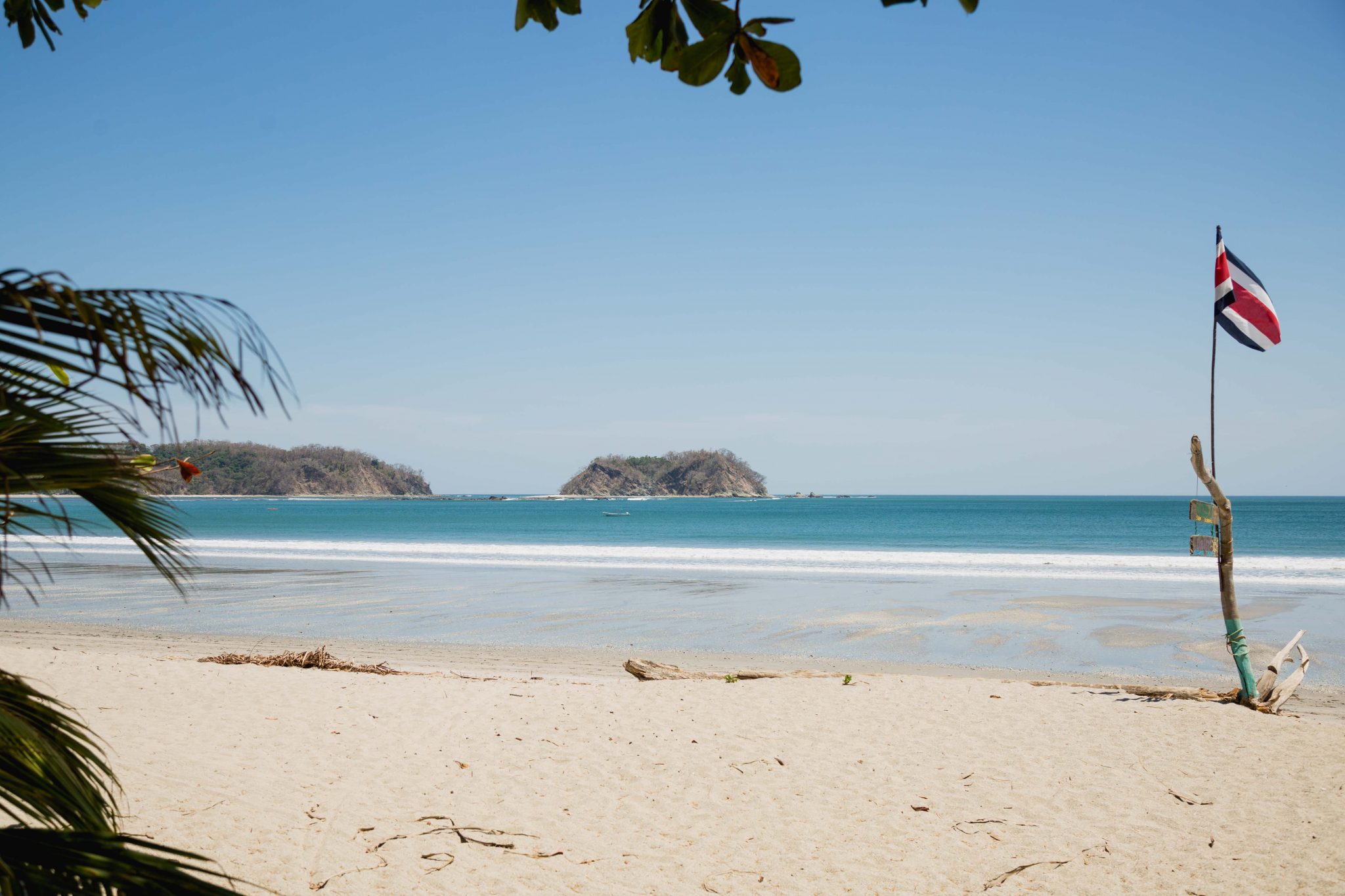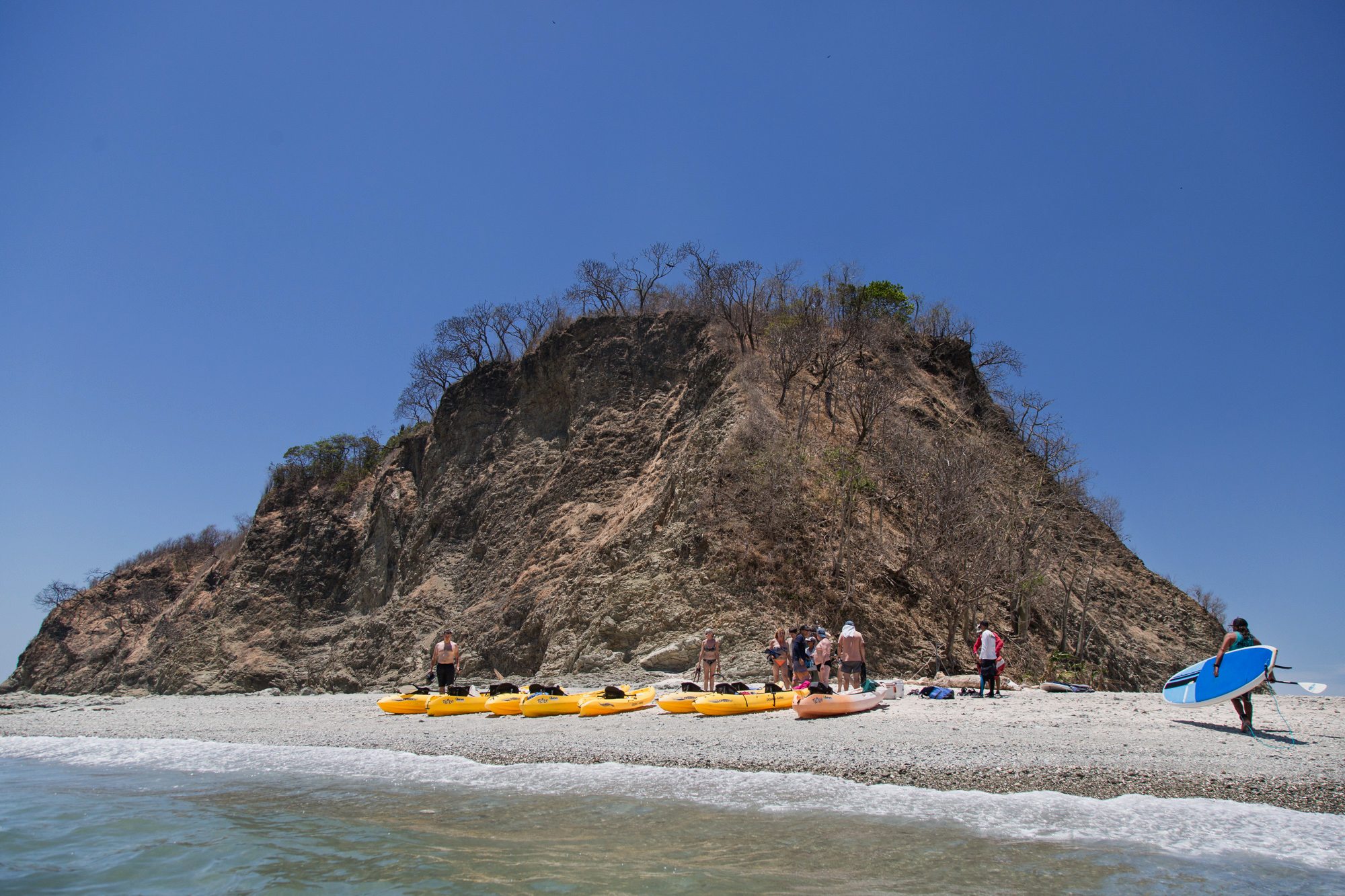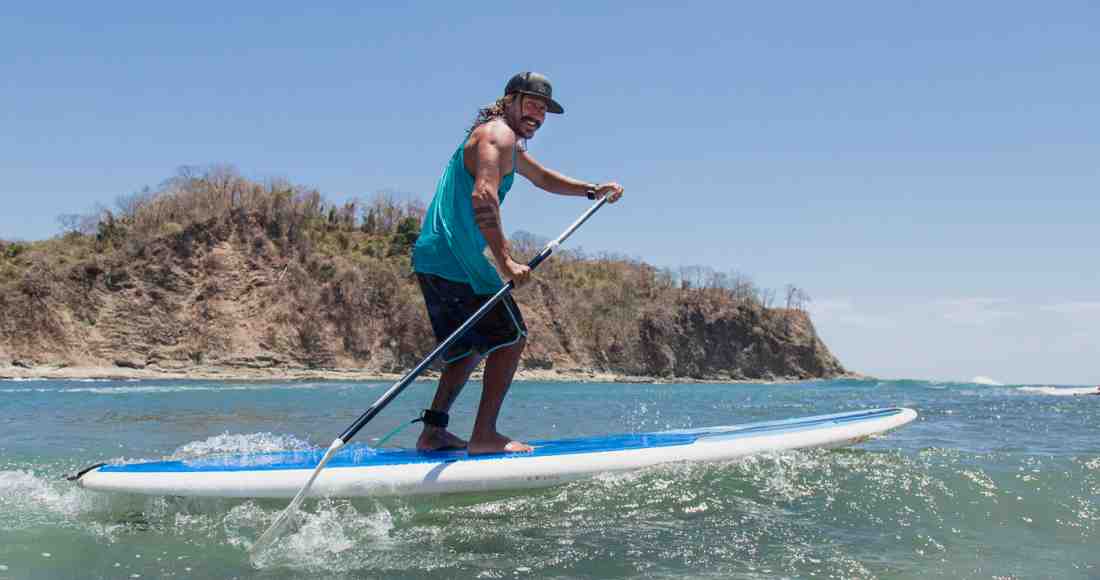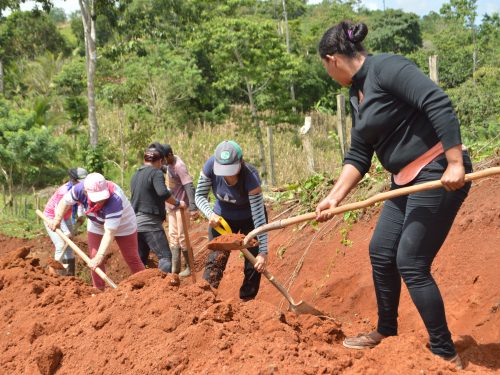
The wind blows softly and the tide is going out. There is a board, a paddle and water and fruits on the sand, all that you need to set sail toward the deserted island in front of me, just over 1,000 yards away.
Kenneth Suárez, known as Pato (Duck) is in charge of Pato’s Surf School and captain for my trip to and from Isla Chora, a small, rocky formation off the coast of Playa Sámara beach, and which was declared a national wildlife refuge in 2002.
The island is surrounded by reefs, which makes its access more challenging to tourists, or those who venture out to its coast in boat, kayak or, like me, on a stand-up paddle board (SUP).
Pato greets me with a smile hidden under his thick mustache, his skin toasted by the sun and his hair dyed by the salt water, all typical manifestations of life among the waves.
He invites me to hop in his Toyota Land Cruiser full of sand, boards and paddles as we head toward the end of the beach. The tour that we are about to take is one of the most populars among tourists visiting Sámara, he says.

This is how Isla Chora looks from Pato’s Surf School on Sámara beach.
While we could paddle from the middle part of the beach, he recommends starting at the point nearest the island for someone who has never done this before.
In addition to Isla Chora, when the tide rises and covers the mangrove swamps, you can paddle down current on the Ora and Buenavista rivers and see lizards, birds and freshwater turtles.
On the beach, Pato draws a board in the sand with his paddle and gives me instructions on where and how I must stop. Knees bent for stability, strong strokes with the paddle deep in the water and eyes set on the horizon so as not to get dizzy.
Before jumping in the water, I put on a life vest to keep myself afloat in case of an emergency and the leash (the cord that connects the board to my ankle) so I don’t float far away if I fall in the water. Now, almost everything is ready.
Into the Sea
Just before getting into the water, the paddleboarders nemesis appears: a strong gust of wind at my back.
“Just to make money, many do tours with these strong winds and then they have to go search for people in a boat,” Pato says, as the wind disappears just as quickly as it arrived.
When you rent paddle-boards it is recommended to use them only within the bay and users are asked to stay at least 100 yards away from the reef. Tours to the island can only be done in the company of a guide because a gust of wind can blow people off the board and into the sea.

Chora is a mandatory snorkeling stop for those who arrive in boat, kayak or paddleboard.
This is why reservations must be made at least a few days in advance, which also helps determine what time low tide will be and if weather conditions permit a trip to the island.
With water at my ankles, Pato warns me not to lift my feet too much because there could be manta rays under the sand.
With the first few waves out of the way and my foot still intact, it’s time to jump on the board. First, I have to crawl to the middle of the board in order to find stability. Then, a second jump to stand on my feet. This is the moment of truth. If I can’t find my balance, I’ll have to go to the island in a kayak.
The most difficult part is keeping balance while the water moves beneath the board. Little by little, my legs get used to the oscillations. Each second standing up is a victory. This is like learning to walk all over again, but on water. While we paddle into the sea, speed picks up and the movement feels more natural.
After 15 minutes of paddling and several immersions, we make a turn to paddle along the rocks and reach a small beach on Isla Chora where kayaks, boards and boats are docked. If we had left from the center of Sámara, the trip would have taken 35 minutes minimum. In general, the tour takes around three hours and, during peak tourist season, it is done three times a day with certified local guides.
As soon as we got our water and fruit out, iguanas run out at full speed and wait for their portion. Visitors feed them despite official signs that ask people not to.
After resting for a few minutes under one of the few spots with shade on the island, we jumped back in the water to snorkel.
There are several spots around the island to go snorkeling, but they are becoming fewer.
Pato remembers that, five years ago, it was easier to spot marine life, but after the 2012 earthquake the water level fell, exposing part of the reef. “There used to be a lot of life here,” he says.
On the way back to the island we picked up the board and paddle to return to Sámara. Leaving the island is harder because the wind is blowing in the opposite direction.
A hawksbill sea turtle pops his head out and then submerges himself. We paddled full-speed to try and catch up to it, without any luck, but we were able to pick up enough speed to reach the coast quickly.
Back on firm ground, I release the paddle and the board. I look triumphantly at the island that i just conquered and remember my favorite part of Alejandro Dolina’s text “Instructions For Seeking Adventures.” He writes, “we can’t think that adventures will come looking for us. It’s no use waiting the unexpected by looking through windows or sitting on a threshold. You yourself have to provoque extraordinary events.”
Don’t Miss It
The tour to Isla Chora island costs between $50-60 per person. These are some of the companies that offer tours:
Samara Adventure Company: 2656-0920
La Isla Surf School: 8860-8921
Pato’s Surf School: 8761-4638







Comments